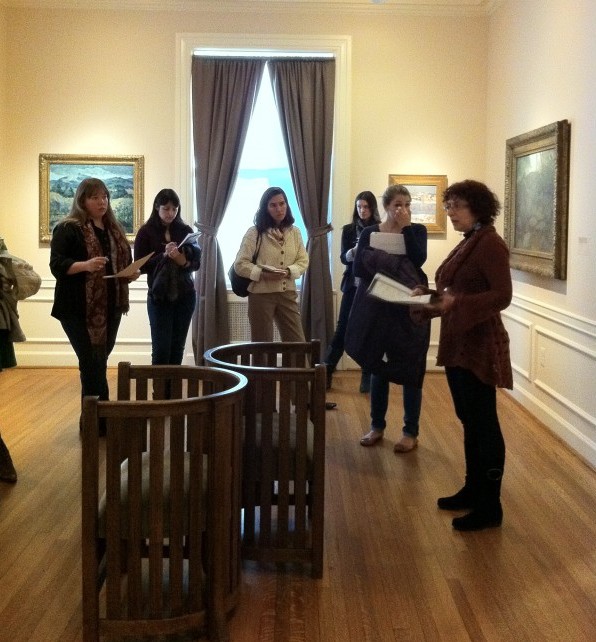
Phillips Librarian Karen Schneider (right) with students of the Center’s spring 2012 art history course. Photo: Megan Clark
I recently ventured over to the galleries to listen in as Librarian Karen Schneider led a discussion with graduate students enrolled in the Center‘s spring 2012 art history course, The Exhibition and the Invention of Modern and Contemporary Art, 1913–Present.
The course is taught by Anne Goodyear, associate curator of prints and drawings at the National Portrait Gallery and adjunct professor of art history at the George Washington University, in collaboration with the George Washington University. It focuses on the evolution of exhibition practices and collecting of modern and contemporary art starting with the Armory Fair of 1913 and ending with examples from present day.
Karen spoke to the students about the history of The Phillips Collection and spent some time outside the library’s Reading Room so that students could observe photographs and archival materials that speak to the museum’s early history. Karen also led the students on a tour of works in the collection relevant to their discussion of Duncan Phillips’s relationship with fellow collectors and artists, including Arthur Dove, Katherine Dreier, Marsden Hartley, and Alfred Stieglitz.
Megan Clark, Manager of Center Initiatives

